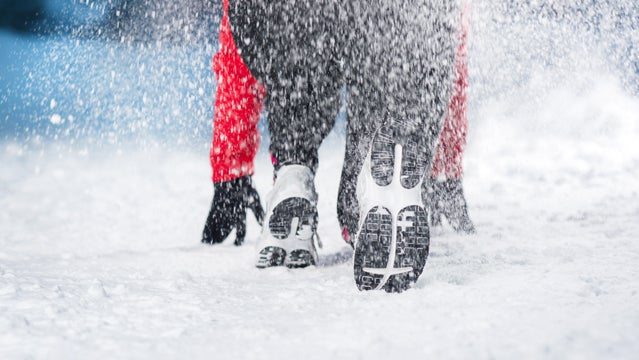“Unfortunately, there is no simple answer to that question,” says Dr. Susan Marsh. The assistant professor of nutrition and exercise physiology at Washington State University, notes that—workouts aside—the number of calories burned at rest is generally higher in cold weather as the body will automatically work to produce more heat to stay warm. “This is evident with even small ambient temperature differences such as 72 degrees Fahrenheit compared to 61 degrees Fahrenheit, where the body isn’t cold enough to start shivering,” Marsh says.
Many factors, however, can affect how hard the body must work to keep its core temperature within normal limits. Fat, for example. Because fat is an insulator, leaner individuals tend to shiver sooner in the cold (skinny folks might also lose heat faster in a hot environment).
“Age is also a factor,” Marsh explains, “with older individuals experiencing less tolerance to hot and cold weather compared with younger individuals.”
And then there are external considerations, such as outside temperature, humidity, wind, and clothing “Heat acclimatization can be achieved through exposure to hot conditions, but adaptation to cold temperatures tends to be modest at best,” Marsh says. “Assuming that the ambient temperature and/or humidity are not extreme and that the body’s core temperature doesn’t fall or rise outside normal limits, you will likely burn more calories during a cold weather workout, particularly if you’re shivering.”
So there you have it.
But wait! There’s another reason why you’ll likely burn more calories in the cold: “Intense exercise in a hot environment can cause the body’s core temperature to rise to near dangerous levels, which results in blood being shunted away from the working muscles to the skin so that heat can be released,” Marsh says. “This means that you can’t exercise for as long in a hot climate as you can in a cold one.”
So, irrespective of how many calories are being burned, you can generally exercise for a longer period of time time in cooler weather. Happy training, endurance athletes.


